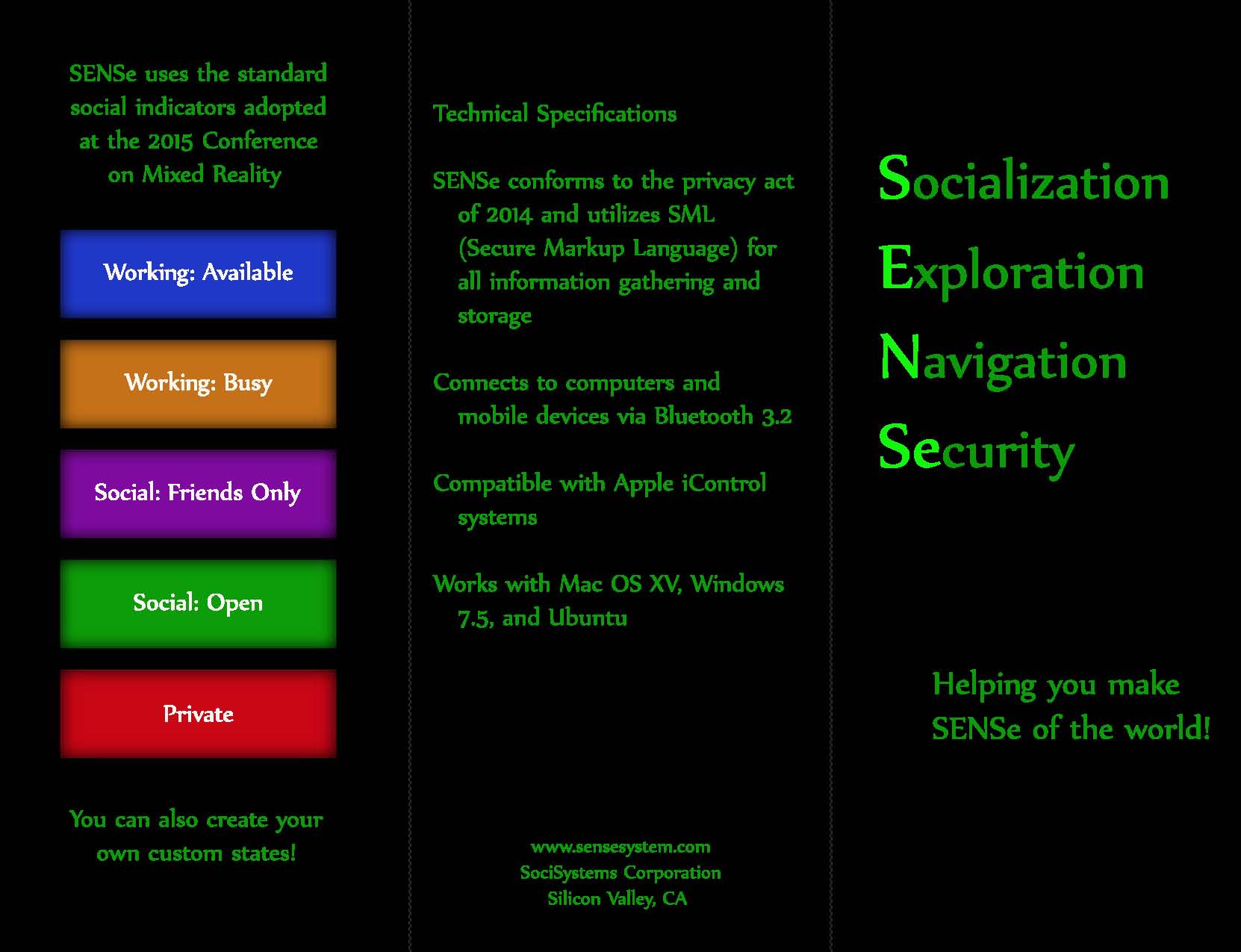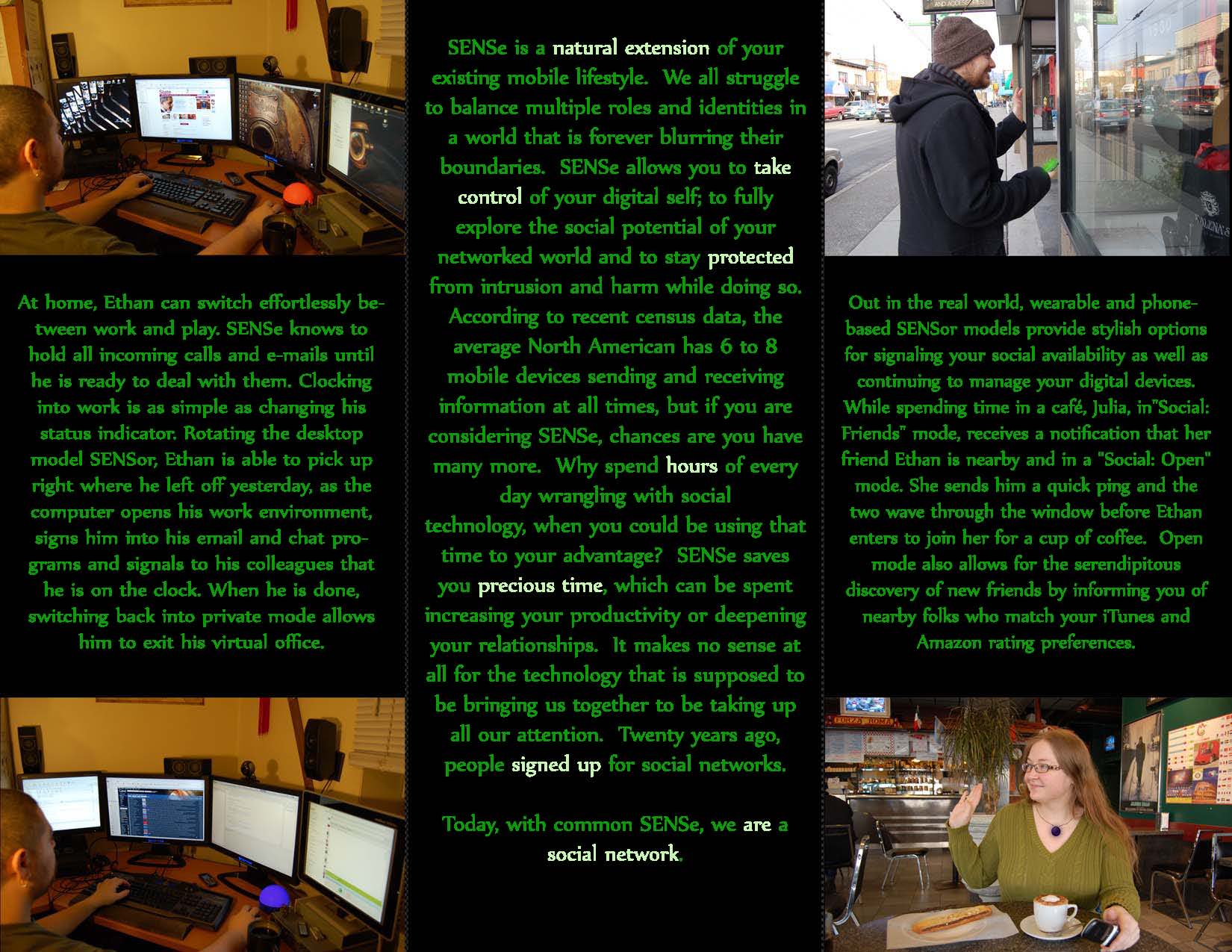About the Authors:Karen & Joshua Tanenbaum are both PhD students at Simon Fraser University’s School of Interactive Arts & Technology. Joshua is currently investigating interactive storytelling and games in the SFU SIAT EMIIE Lab under the supervision of Magy Seif El-Nasr and Jim Bizzocchi. His primary research is an investigation of narrative meaning in games and interactive media, however he also writes on embodiment in game interfaces, virtual worlds, and agency and performance in games. Karen is exploring user modeling and ambient intelligence for ubiquitous computing spaces under the supervision of Marek Hatala in the Laboratory for Ontological Research. Her research projects include work on sustainable design, tangible and tabletop computing systems, and expert recommender systems. They are currently collaborating on a research project called TUNE: Tangible Ubiquitous Narrative Environment, a physical storytelling space that responds to the actions and preferences of the reader.
For more information about all of the contest winners, please see the full contest winners announcement.
Participants in the competition warrant that their ideas are their own. Where ideas include component-ideas or materials by others, applicants warrant that any intellectual property owned by others and used in their submissions is approved for use and appropriately attributed.
The copyright or patent for any material submitted for the competition remains with the original owner.
Description of the Idea:
The imagined social technology of SENSe (Socialization, Exploration, Negotiation, and Security) is a natural extension of two current trends in social networking: social presence and privacy concerns. It is evident that the growth in popularity of services like Facebook, Twitter, Flickr, and Google Talk and the parallel increase in mobile device usage are symptomatic of larger changes in the nature of social spaces, private spaces, and human interconnectedness. Already, we have seen how social networking supports the emergence of a form of ambient social presence. People now think nothing of signaling their receptiveness to phone calls by toggling a status indicator in Skype, while Twitter and Facebook allow users to periodically broadcast short status updates to their entire social circle. These updates and status indicators foster an “always‐on” sense of one’s social geography: what people are doing right now, minor incidents that occurred throughout their day, how they are feeling and what they are planning. Our new networked world supports the dramatic and the mundane in seamless concert. When disasters occur, these services support efficient real‐time coordination of rescue and relief efforts; when history is made, people around the world receive it in a thousand tiny haiku. If you see that a colleague is having lunch down the block you might join them for a bite to eat; if you see a friend is sad or angry about something you might call to offer comfort. The combination of distributed social broadcasting and pervasive mobile devices is a potent one that has already changed how we communicate in dramatic ways.
However, this is not a trend without consequences. As mobile devices become more pervasive and distributed, the line between what is public information and what is private information becomes much more difficult to negotiate. People are posting more and more information about themselves in public arenas, often without full awareness of the size of the potential audience for viewing this information, or how long it will persist. Small (but significant) indiscretions such as posting photos of last weekend’s party to a social network where they may be accessed by coworkers and supervisors have already resulted in lost jobs. Larger slips, such as accidentally making medical records viewable or failing to secure shared drives with personal documents such as passport or birth certificate information, can result in vulnerability to identity theft and fraud.
Equally troubling is the way new location‐aware technology allows for one’s daily routines to be scrutinized in subtle and often unanticipated ways. When geotagged Flickr photos, Twitter tweets and GPS enabled mobile phones allow easy Google map plotting of your home, workplace, children’s schools, and frequent dining locales, the potential for privacy invasions in the physical as well as digital world increases. As we adopt and embrace this technology we are often not made fully aware of how much of this kind of data is accessible online and how quickly tools can be developed to aggregate and synthesize it into detailed information about our personal lives. Seldom do we even pause to contemplate the potential harmful repercussions of this technology, or to consider how we might mitigate these risks without sacrificing all of the benefits derived from this new connectedness. SENSe provides a technological infrastructure to assist in the ever complexifying process of negotiating these public and private spheres.
In 2020 we expect to see a greater unification of the public and the private. The core affordance of these social technologies is an unprecedented level of access to each‐others’ private worlds, but it comes with an exaggeration of all of the risks spelled out above. As with any shift in the technology of socialization, a parallel shift must occur in how we negotiate and navigate the new social world. When humans first began living in cities, the social norms from an agrarian society were no longer sufficient to govern interpersonal behavior. In 2020, we anticipate a need for a new mechanism for negotiating our identities, our personal information, and our public and private spaces – spaces that will be closer than at any other point in our history.
Social norms and etiquette already govern how we interact with each‐other, although they do so mostly beneath the surface of our daily life. We do not expect this to change or to be replaced with some prescriptive digital system that tells us how to interact with each other. Instead, we envision SENSe as a natural evolution of our growing need for a set of social tools that are shared across the physical and digital landscape. In other words, our social needs will drive the development of technology like SENSe, which will support and simplify the otherwise too complex task of trying to micromanage all of the avenues of communication that are converging on our lives. At its most simple, the SENSe system is a wearable or desktop device that allows its user to switch seamlessly from public to private with a single interaction, by selecting from different modes of privacy and openness. SENSe helps people manage a number of different aspects of technology, including the setting of status messages in communication programs, ringers on mobile phones, the filtering of email and text messages, choosing when to automatically post location information, and so forth. Obviously a system like SENSe also requires some additional infrastructure and architecture, including the ability for a number of different programs and devices to communicate with each other, but this increased interoperability is another trend already observable in 2009.
Perhaps more importantly than controlling software and hardware, SENSe is a tool for navigating the murky waters of a world where anything is a potential point of data to be gathered: from a simple trip to a grocery store, to a business meeting, to a visit to the chiropractor. In a world where we leave glowing digital footprints wherever we go, SENSe allows us to choose when and where to leave that trail, and when to cover our tracks. If you are going out for a night on the town, for instance, it knows to not include your boss in the list of people with access rights to the photos taken in “social mode”. In this way, SENSe supports the process of negotiating different levels of privacy for different audiences. It tells you where your information is going, who is looking at it, and for how long: it asserts your rights over your digital identity, and gives you control over how you construct that identity for a given audience.
Finally, SENSe extends the discovery functions of social networks into the physical world. Putting SENSe into different “social discovery” modes invites connections between people who might otherwise never meet. A lonely office worker might meet a girl who shares his love of old horror movies on a train ride home, or a musician looking for an audience might find a group of teens browsing his songs while sitting in the food court of a mall. SENSe will tell you if any of your old college friends are sitting in the same movie theater with you (assuming they are signaling social openness, of course), and allow you to schedule and coordinate a meet‐up for drinks later. SENSor devices can come in all shapes and sizes, with aesthetics designed to appeal to a wide range of tastes. One thing they all share is the ability to visually signify social receptiveness to the casual observer. A glance at your SENSor device allows an observer to easily determine whether or not it is okay to strike up a conversation with you about the weather.
In 2020, people do not join social networks: they are social networks. It is a natural part of the ongoing movement from unmediated socialization through fully mediated socialization into an equilibrium that combines the advantages of both. The SENSe system or something similar will become another tool for navigating the digital and physical communities. Part D of this submission is a mockup of a brochure advertising the SENSe system and illustrating a couple usage scenarios.
Imaginative Realization, Embodiment, or Illustration of the Idea:








